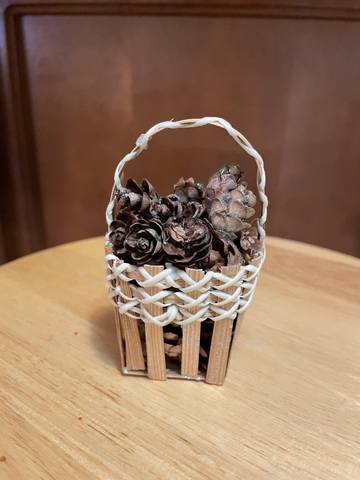
Now is a good time to search on the ground around trees in your yard or on public pathways through your town to find pine cones and other things that have dropped from trees. They make wonderful art work for anyone who has the patience and skill to create original pieces.
Many years ago, a friend of mine gathered some small pine cones she found and crafted them into a Christmas tree ornament. She gave it to me, and I have hung it on my tree every year since then. It reminds me of our friendship and of her ability to create lovely things.
Start close to home by walking around your yard to see what you can find on the ground. Twigs, pine cones, pine needles, dried autumn leaves, and little stones are among the many things you might find. If you want, you can invite family members or friends to join the fun.
Drop the items you collect into a paper or plastic bag. When you have enough, take them inside. If necessary, clean them off in whatever way seems most appropriate. If you choose a way that damages the item, don't worry. Just go out and find something else.
Once the items you collected are clean and dry, spread them out on a table or on the floor. Give them a discerning look. What item could you create with some of those pieces? If you think of something, move those pieces to one part of the table or floor and begin putting them together.
If what you create doesn't look like you hoped it would, set it aside and look at the remaining pieces. What could you build from them? Use your imagination. You can use anything to help you build your idea, such as a glue gun, cloth material, string, or colorful paper.
Keep working until you run out of time or want to take a break. There's no need to use up all the pieces. Anything left over you can deposit outside in your yard. Set the pieces you have completed aside.
Look at all the items you have created. Are there a few that you really like? Keep as many of them as you want. The others would make good gifts for friends. If you don't like some of the things you created, throw them away or give them to your cat or a neighbor's cat for a toy.








